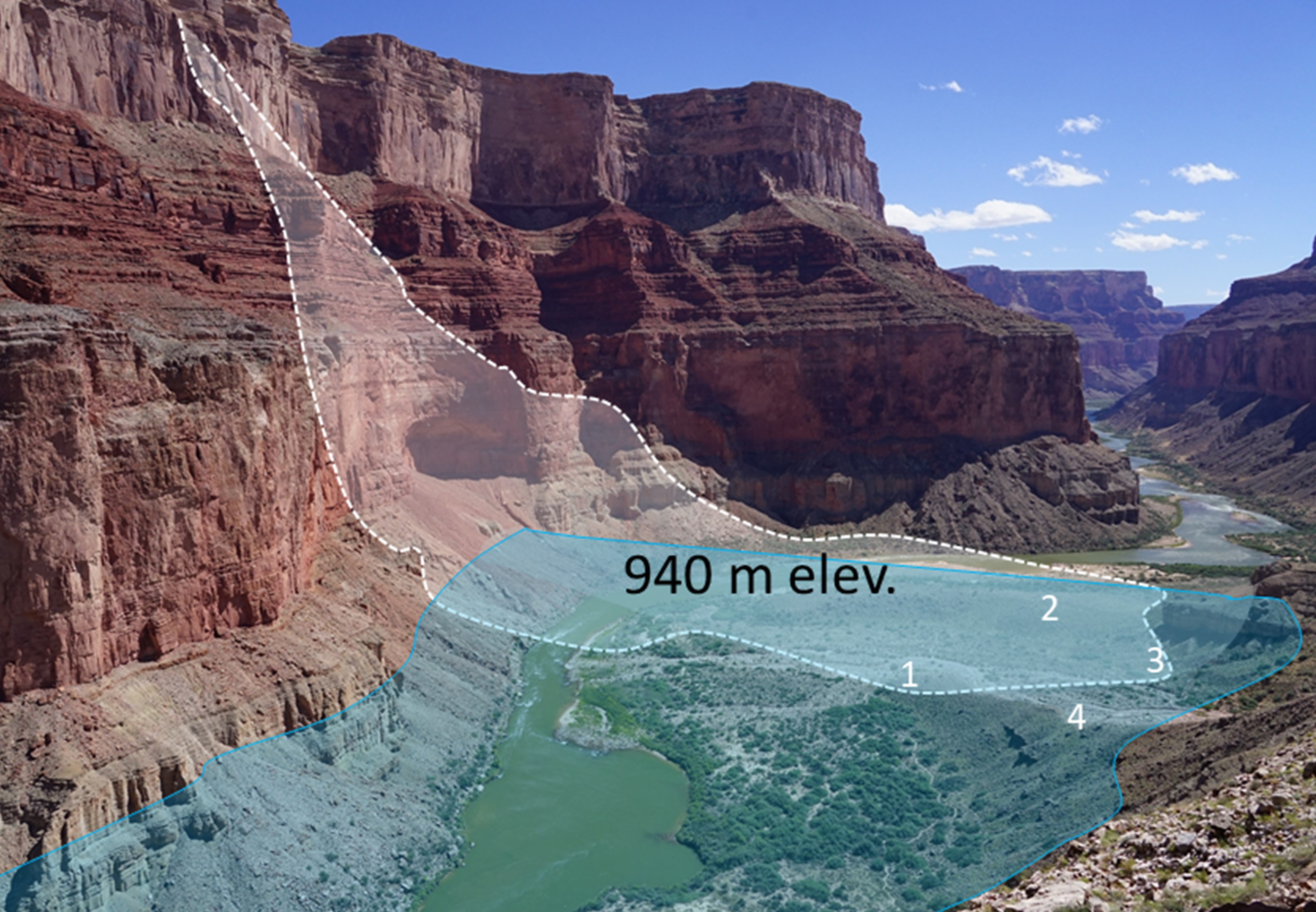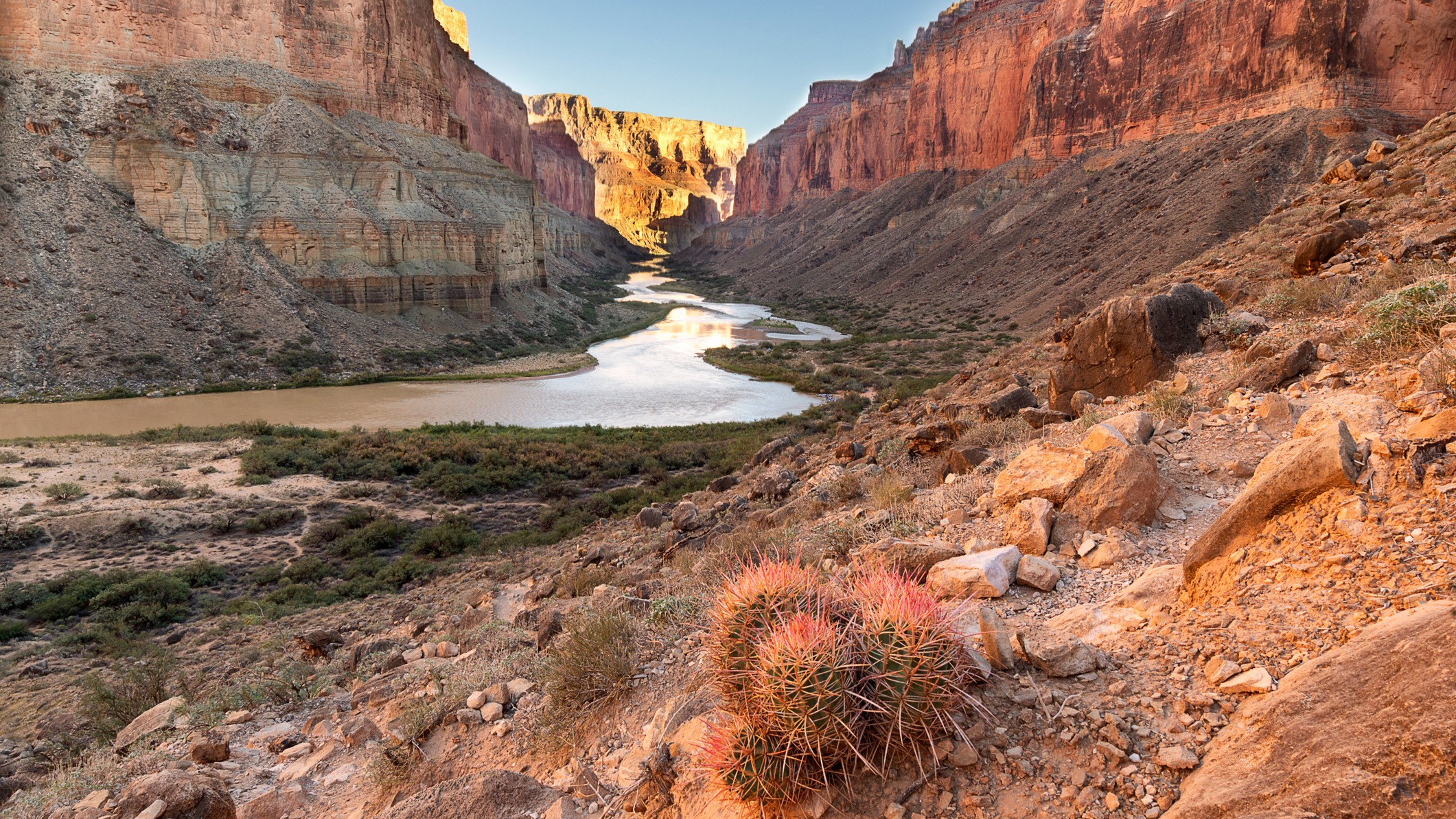The ancient meteor impact that formed Arizona’s Barringer Crater sent shock waves through the Grand Canyon — likely triggering a landslide that dammed the Colorado River, a new study suggests.
Barringer Crater, also called Meteor Crater, formed between 53,000 and 63,000 years ago, when a giant cosmic “curveball” punched a hole in Earth’s surface. The force of the impact traveled more than 100 miles (160 kilometers) to the Grand Canyon, which may have caused an entire cliff face to collapse into the river, scientists have found.
The discovery, described July 15 in the journal Geology, has linked two major events that were thought to be completely unrelated.
“There are other possibilities, such as a random rockfall or local earthquake within a thousand years of the Meteor Crater impact that could have happened independently,” Karl Karlstrom, a professor of Earth and planetary sciences at the University of New Mexico and lead author of the study, said in a statement.
But the events described are extraordinary, Karlstrom said — and they happened within a suspiciously small time frame, suggesting that they were related.
Related: Grand Canyon Dragon wildfire burns down historic lodge and triggers toxic gas leak
Researchers already knew that the Colorado River flooded the Grand Canyon sometime in the Late Pleistocene (129,000 to 11,700 years ago). They determined this by analyzing animal figurines carved out of driftwood, which Karlstom’s father and colleagues unearthed in a cavern called Stanton’s Cave in the 1960s, according to the statement. With techniques available at the time, the researchers dated the driftwood and found it was more than 35,000 years old. (The figurines themselves were carved between 3,000 and 4,000 years ago.)
Stanton’s Cave sits 150 feet (46 meters) above river level, so the water must have risen to deposit driftwood there — but the reason remained unknown. “It would have required a ten-times bigger flood level than any flood that has happened in the past several thousand years,” Karlstrom said.
“Rare and unusual occurrences”
Subsequent analyses using more advanced techniques suggested the driftwood was 43,500 years old, and the new study pushed the date back even further, to 56,000 years ago. Dating the driftwood was a crucial step in figuring out how it got to Stanton’s Cave in the first place, Karlstrom said.
But the researchers needed more evidence to complete the puzzle, so they searched similar caves in the area. “From numerous research trips, Karl and I knew of other high-accessible caves that had both driftwood and sediment that could be dated,” study co-author Laura Crossey, also a professor of Earth and planetary sciences at the University of New Mexico, said in the statement.
Several labs examined the additional driftwood samples, and all came back with dates consistent with a flooding event 56,000 years ago. The locations of the caves pointed to this event being a landslide near Nankoweap Canyon, which is downstream of Stanton’s Cave. The landslide may have been so big that it created a dam on the Colorado River, forming a lake that stretched for miles upstream. As a result, water levels may have risen high enough to deposit driftwood in the caves, according to the statement.

Around the same time as these results appeared, study co-author David Kring, principal scientist at the Lunar and Planetary Institute in Houston, was recalculating the age of the Barringer Crater. Kring’s work showed that the meteor impact occurred around 56,000 years ago, according to the statement.
Kring had previously calculated that the Barringer meteor impact unleashed a magnitude 5.4 earthquake, and when the researchers came together to work on the new study, he determined that the residual effect at the Grand Canyon would have been the same as a 3.5 magnitude earthquake. This could have been enough to disintegrate a cliff face, according to the statement.
“The team put together these arguments without claiming we have final proof,” Karlstrom said. “Nevertheless, the meteorite impact, the massive landslide, the lake deposits, and the driftwood high above river level are all rare and unusual occurrences.”
With dates that all converge around 56,000 years ago, it seems credible for the events to be related, he said.
